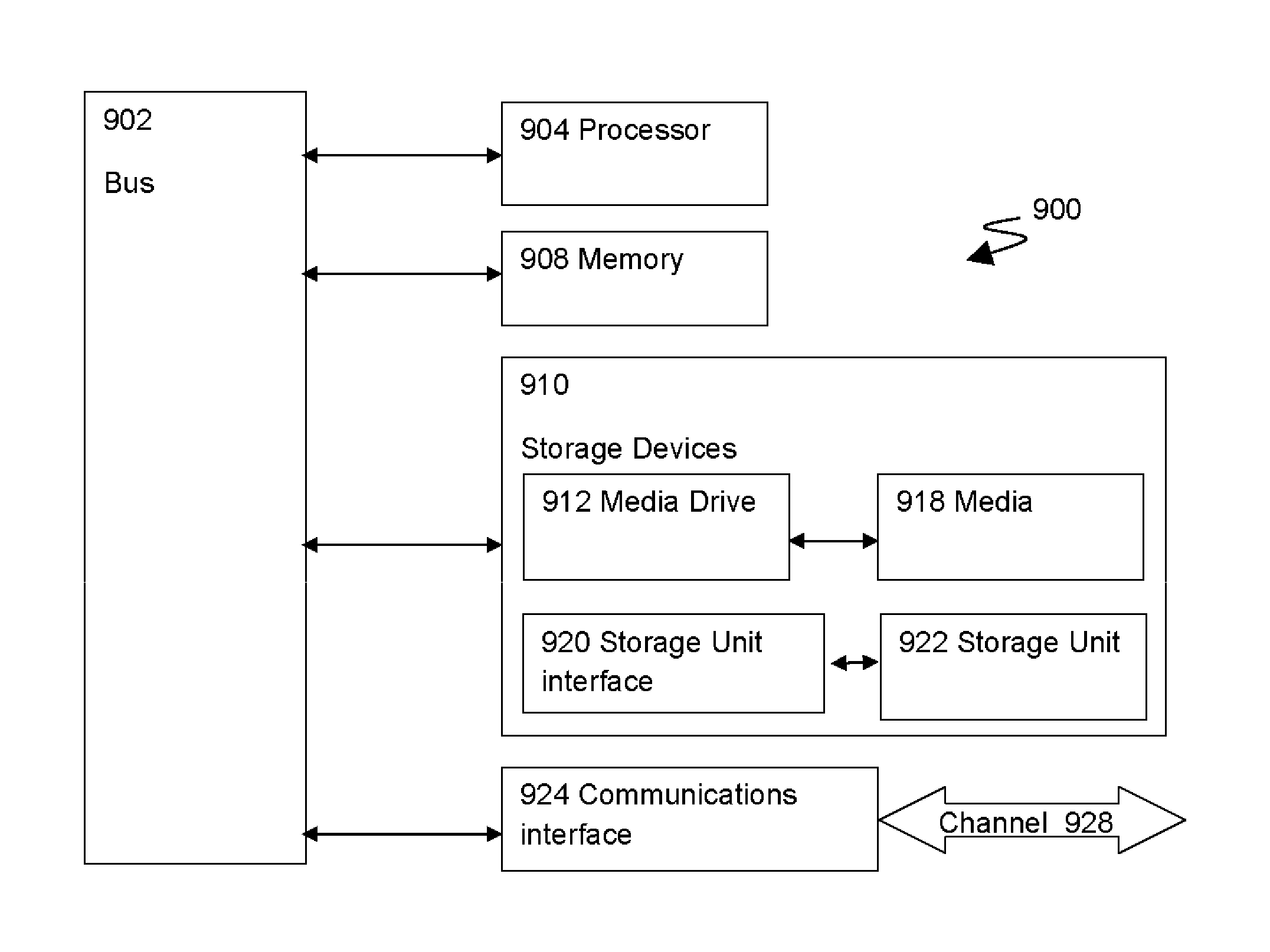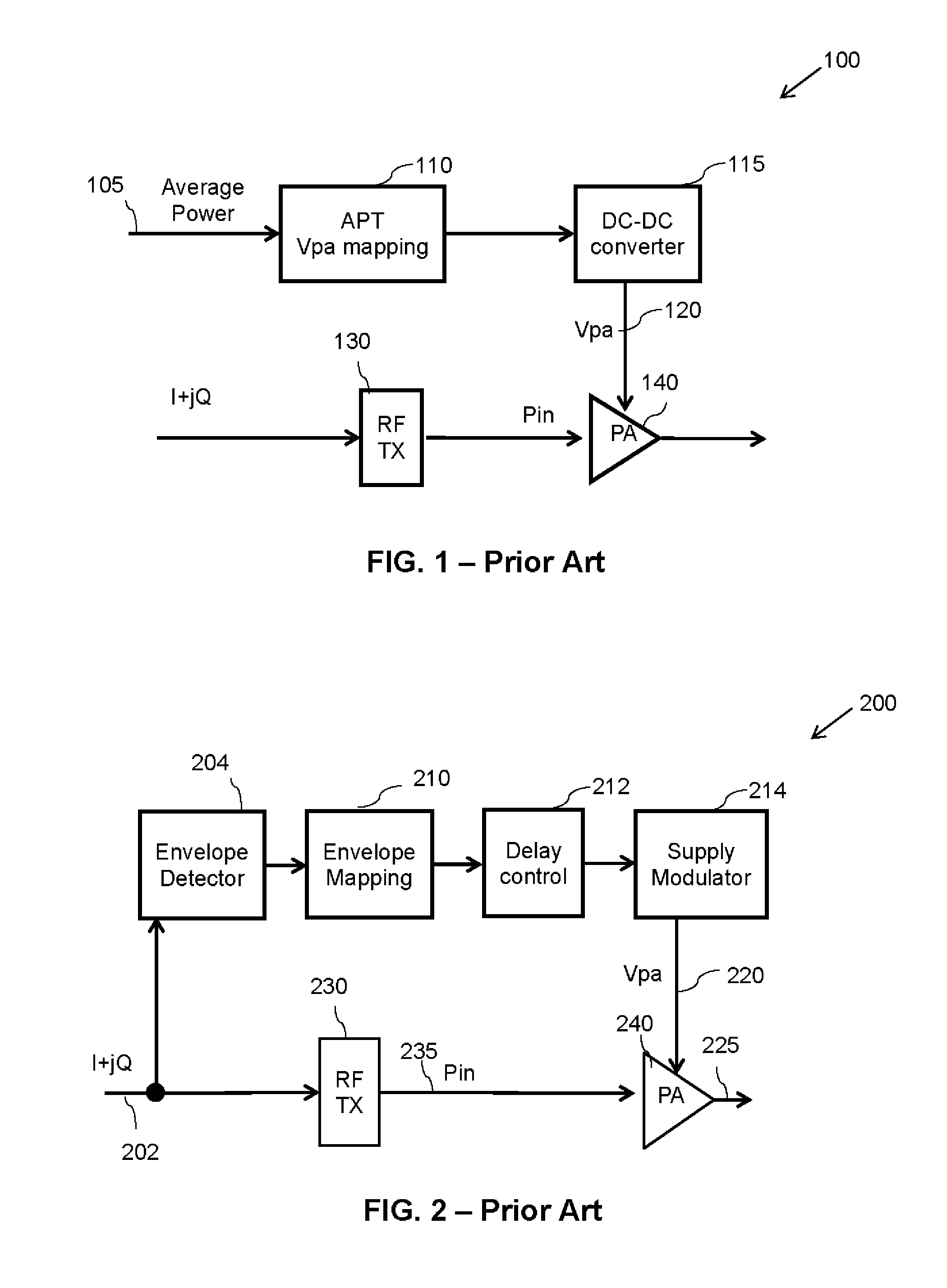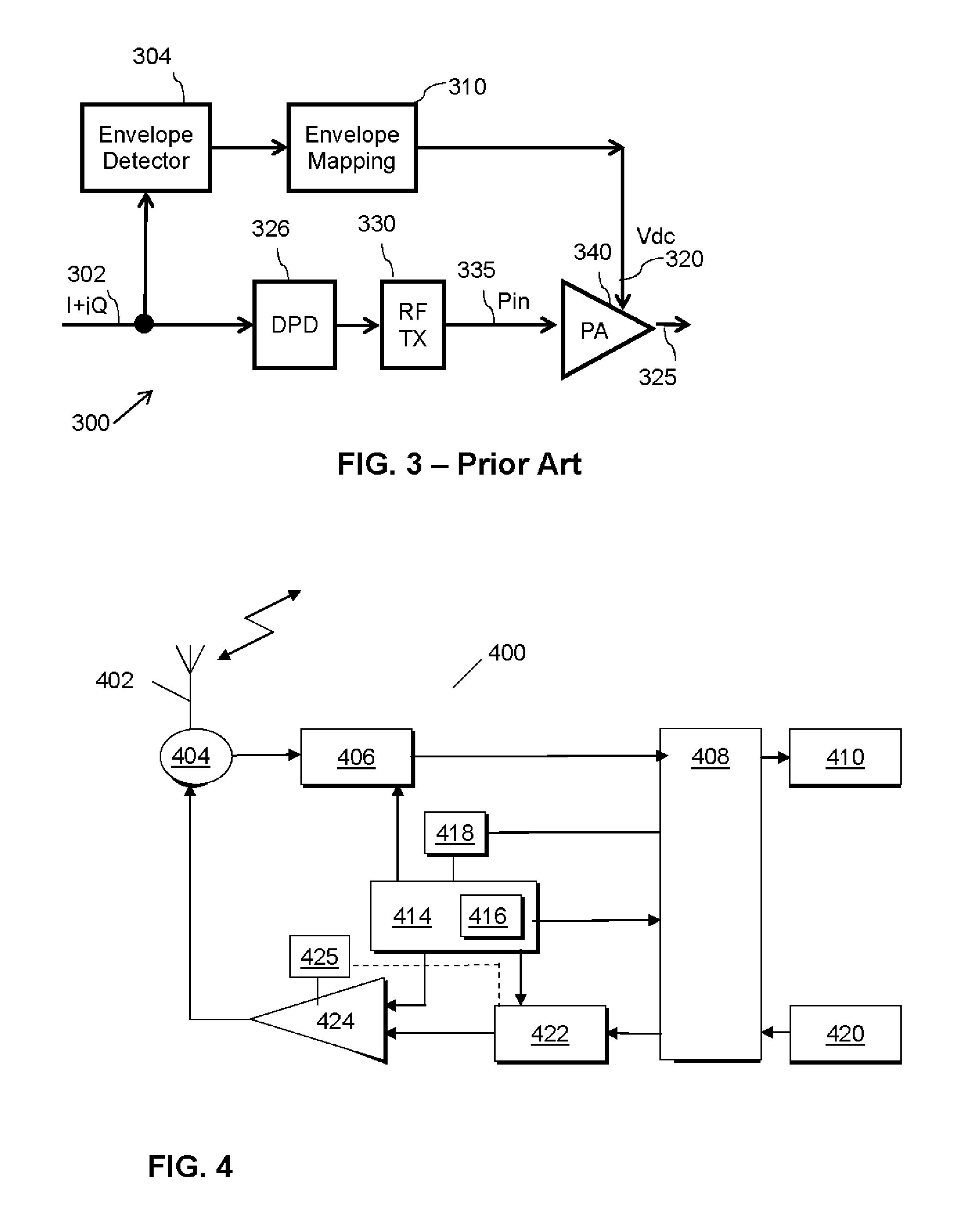Methods and apparatus for envelope tracking system
a tracking system and envelope technology, applied in the field of methods and apparatus for envelope tracking systems, can solve the problems of poor power amplifier efficiency, low dc to rf power conversion efficiency of operation, and inability to carry (subscriber) wireless communication units, etc., to achieve the effect of alleviating one or two, and reducing the number o
- Summary
- Abstract
- Description
- Claims
- Application Information
AI Technical Summary
Benefits of technology
Problems solved by technology
Method used
Image
Examples
Embodiment Construction
[0050]Examples of the invention will be described in terms of one or more integrated circuits for use in a wireless communication unit, such as user equipment in third generation partnership project (3GPP™) parlance. However, it will be appreciated by a skilled artisan that the inventive concept herein described may be embodied in any type of integrated circuit, wireless communication unit or wireless transmitter that comprises or forms a part of an envelope tracking system. Furthermore, because the illustrated embodiments of the present invention may for the most part, be implemented using electronic components and circuits known to those skilled in the art, details will not be explained in any greater extent than that considered necessary as illustrated below, for the understanding and appreciation of the underlying concepts of the present invention and in order not to obfuscate or distract from the teachings of the present invention.
[0051]Examples of the invention will be describ...
PUM
 Login to View More
Login to View More Abstract
Description
Claims
Application Information
 Login to View More
Login to View More - R&D
- Intellectual Property
- Life Sciences
- Materials
- Tech Scout
- Unparalleled Data Quality
- Higher Quality Content
- 60% Fewer Hallucinations
Browse by: Latest US Patents, China's latest patents, Technical Efficacy Thesaurus, Application Domain, Technology Topic, Popular Technical Reports.
© 2025 PatSnap. All rights reserved.Legal|Privacy policy|Modern Slavery Act Transparency Statement|Sitemap|About US| Contact US: help@patsnap.com



